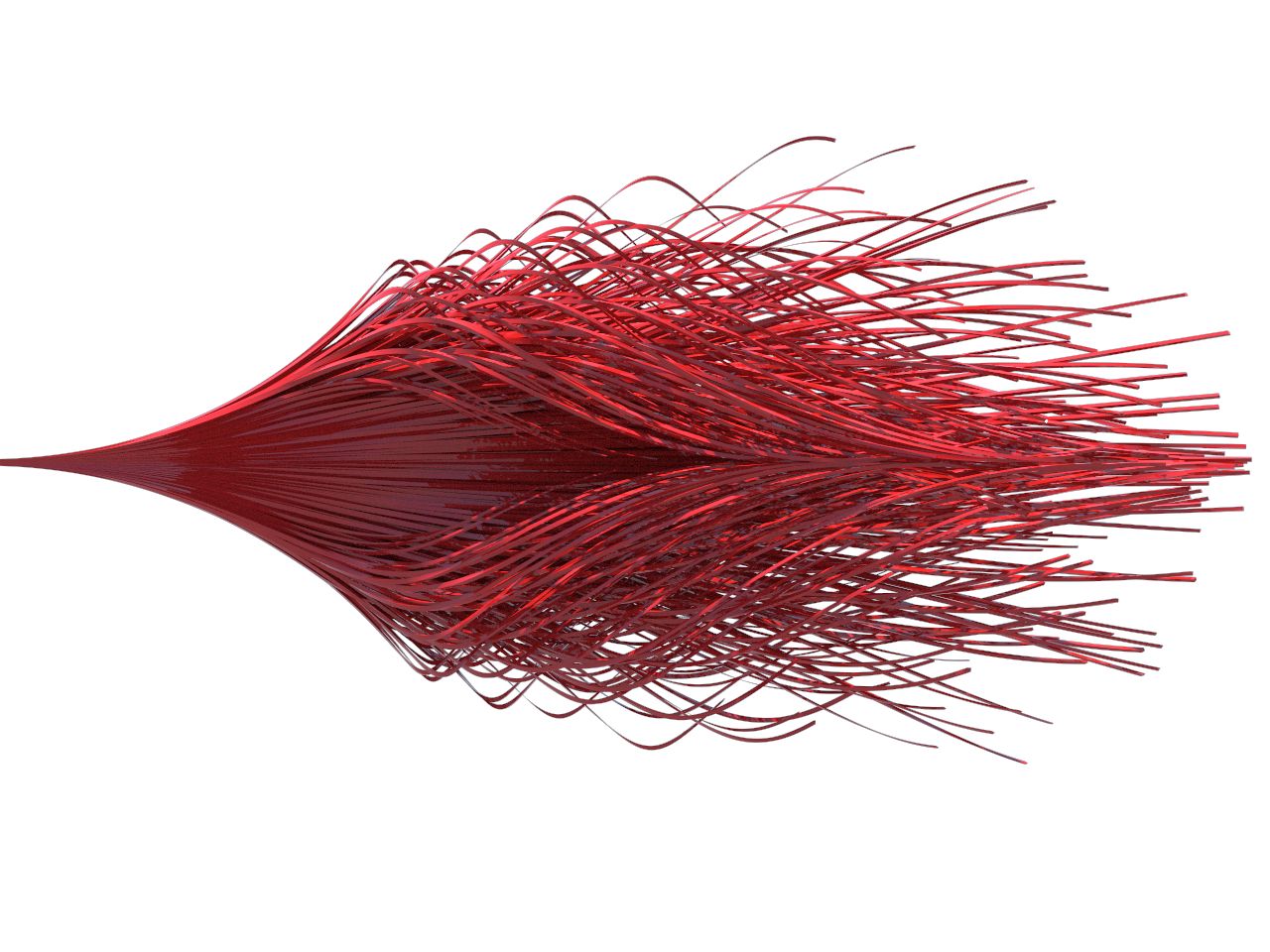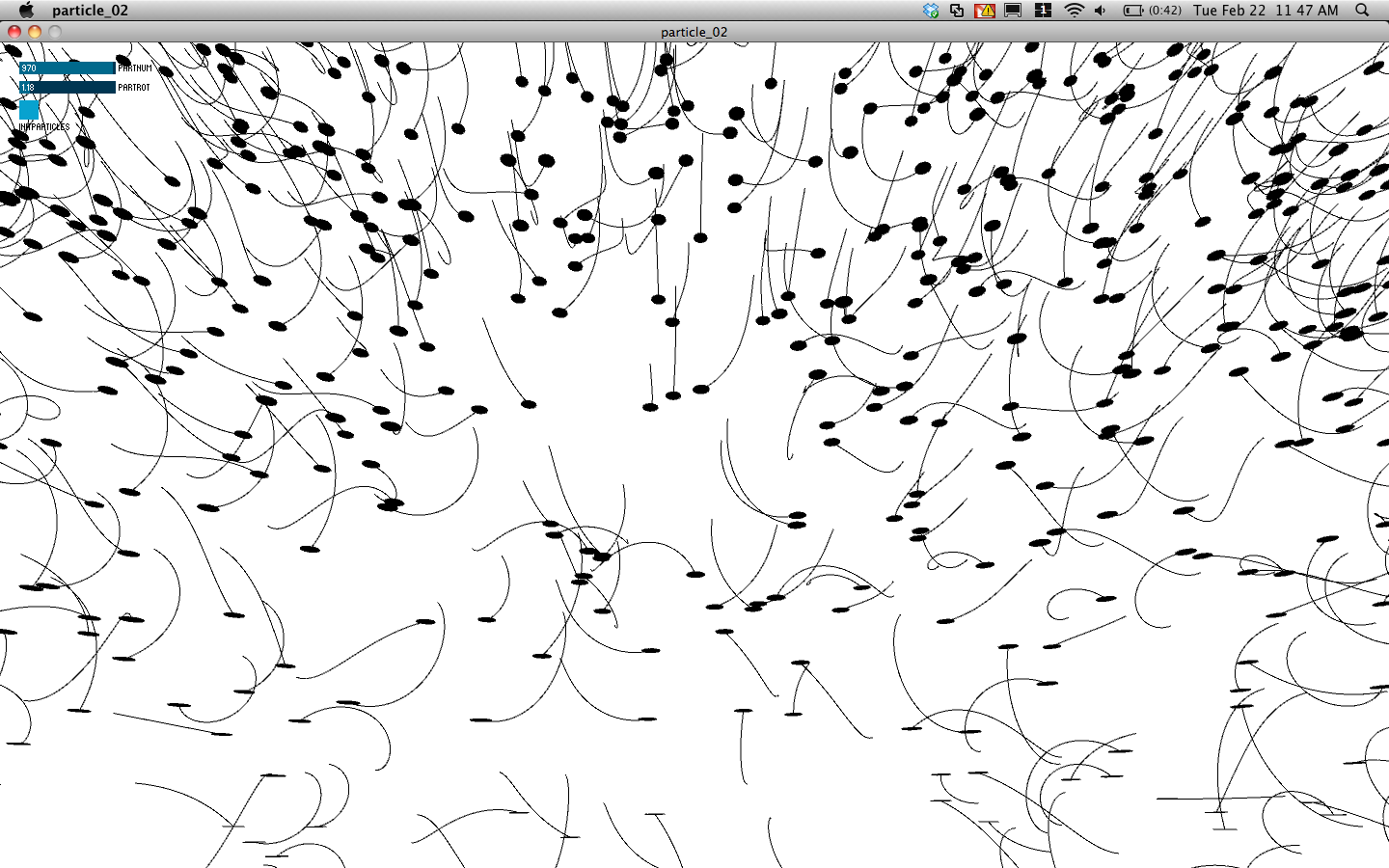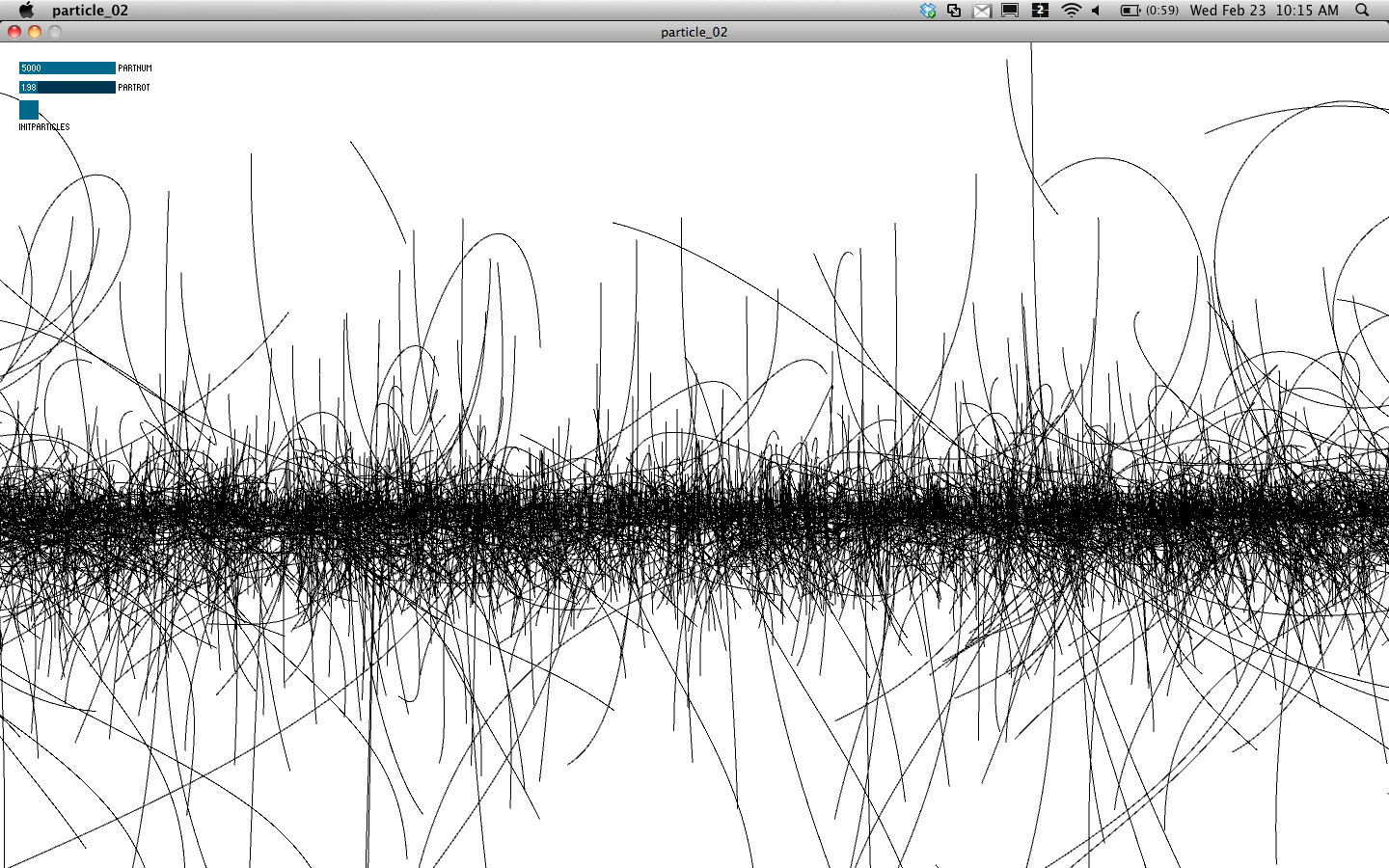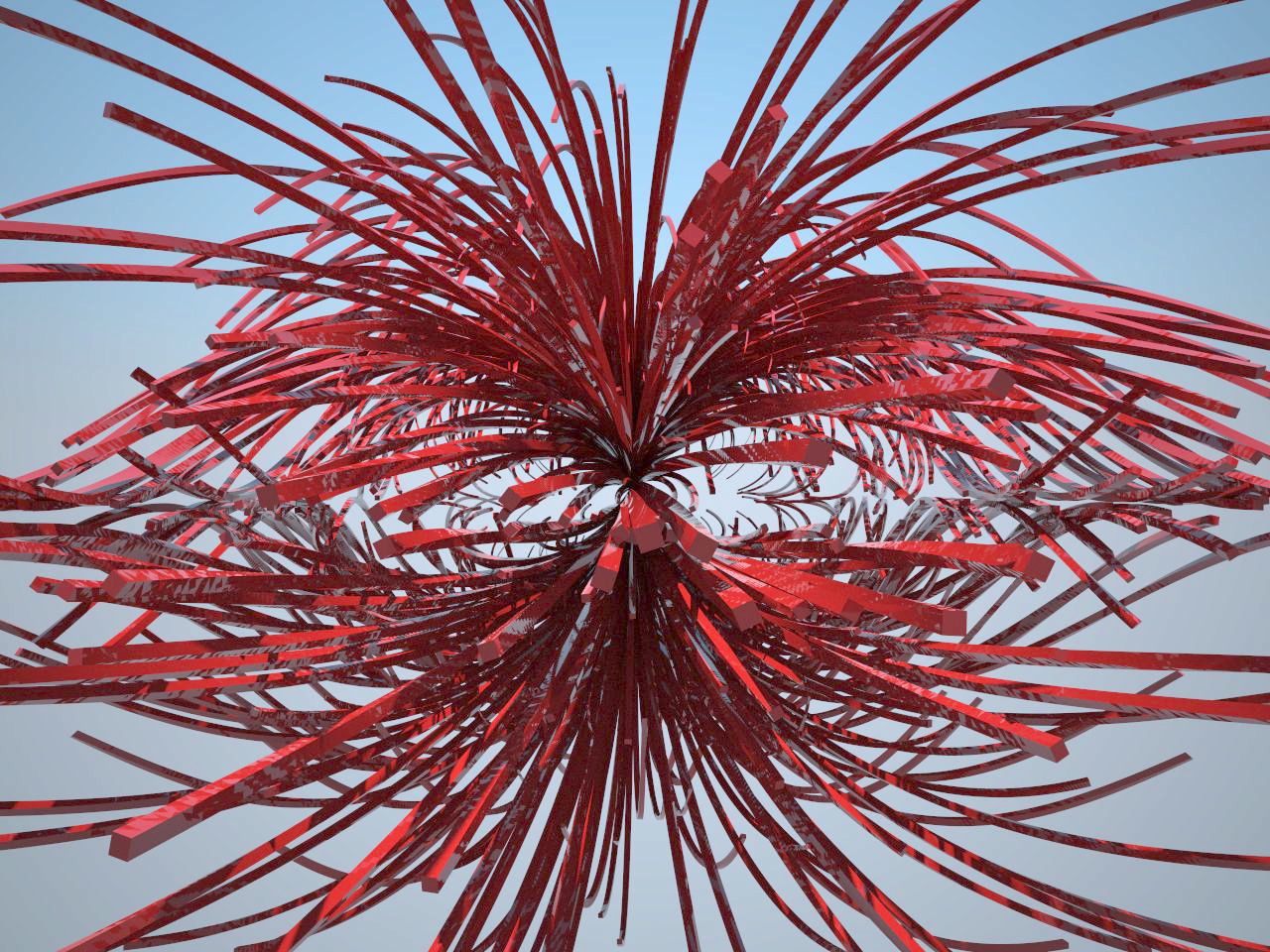shawn sims-mesh swarm-Project 4
Play
Download the app and get your swarm on!
Mac/Windows mesh freeware
About
Mesh Swarm is a generative tool for creating particle driven .stl files directly out of Processing. The 3d geometry is created by particles on trajectories that have a closed mesh around their trace. Parameters are set up to control particle count, age, death rate, start position, and mesh properties. These rules are able to be changed live with interactive parametric controls. This program is designed to help novice 3d modelers and fabricators gain an understanding of the 3d printing process. Once the desired form is achieved the user can simply hit the ‘S’ key and save a .stl to open in a program of choice.
The following video is a demo of the work flow of how to produce your custom mesh…
The beginnings of the project were rooted in the Interactive Parametrics 2011 workshop in Brooklyn, Ny hosed by Studio Mode and Marius Watz. Here I began to investigate point and line particle systems in 3D and later added mesh and .stl functionality. These are a few examples of screen grabs from the point and line 3D process.
From there, the next step was to begin working with 3D printable meshes. The framework of the point and line code was used to drive the 3D meshes that followed. After the .stl export, I used Maya to smooth and cluster some of the mesh output. The process of mesh smoothing creates interesting opportunities to take clustered geometry and make relational and local mesh operations giving the appearance of liquid/goo. Renderings were done in Vray for Rhino.






Hi Shawn, this is a great project so far. It’s important you upload your narrative, screenshots and screengrabs ASAP. Below are comments from the crit. -GL
————————————
I recommend exploring particle-particle interactions. (Another way of thinking about this, is the introduction of flocking-like rules.) Having rules like enforcing local alignment or separations will produce forms that e.g. twist around each other, etc.
Another possibility is that the particles could be aware of the “trail” volumes left by previous particles, and have to navigate around them, rather than just penetrating through them. You’ll avoid the self-intersection problems, and possibly produce even more interesting forms that have self-affecting spatial logics.
I like it when you don’t call it paint throwing/splatter/blood. It’s super cool. Try experimenting with the colors.
Results are quite beautiful. The fact that you can make it accessible to beginners is gravy.
Very slick – I really like the idea of moving the result into maya and playing with the mesh. You should experiment with subsurface scattering or ambient occlusion shaders – I think you could make some really sick looking stuff with this!
Yeah, different colors. How about mixing colors by altering the color states as the particle paths diverge, then blend as they cross again.
The forms look really beautiful. I like seeing the evolution to the final renderings through your process.
Beautiful renderings with the mesh clustering!
beautiful
It’d be interesting to see what kind of rules/systems you can get it to follow. Maybe having user placed obstacles, or predator avoidance. Beautiful renderings though.
Nice splash screen. The 3D stuff looks great. Amazing use of many tools.
This would make a really cool music visualization. (the dot and line version)
These are beautiful. I would like to see what a print would look like.
I like the tendril version, but I love the fluid version. I’m thinking a very awesome series of minimalist print ads for Dexter.
This is fantastic. The fully rendered forms are really beautiful- I do prefer the splatter over the winding meshes. Printed versions could be really neat too- the meshes tend to remind me of peacock feathers twisiting in on themselves.
Gorgeous. Show us more! When you put it together at the end, it’d be great if the package could be tied up nicely with the running concept explained explicitly somewhere.